Flying Legends airshow Duxford 75 D-DAY debriefing July 13th & 14th 2019.
Text by Benoît Denet & Martin Gillet
Pictures by their respective authors.
We’ve been travelling around Cambridge County for a few years now and we are always very pleased and surprised by this Airshow.
Great close-up photo opportunities or take a stroll and soak it all up ’The Flight Line Walk' this weekends Flying Legends airshow
Don’t forget high factor sunscreen, hat/cap and water. Keep hydratedhttps://t.co/jYaKtW4T07
Photo: A McClean#I_W_M #IWMDuxford #flypastmagazine pic.twitter.com/e2pxB0EzBr— Flying Legends (@Flying_Legends) July 9, 2019
The 2019 edition was dedicated to warbirds, with a focus on the 75th anniversary of D-DAY. The gorgeous weather was also absent and it was under a grey sky that the large public rushed for the “great mass of the European warbirds”.
?? Cheerful day @Flying_Legends in a stylish & good mood. Just sing along. #Flying_Legends #I_W_M #IWMDuxford #VisitBritain pic.twitter.com/6ZImDt9WdQ
— Martin Gillet ?? (@mgillet) July 13, 2019
One of the most eagerly awaited performance was the brand new “acrobatic” Ultimate Fighters patrol. The team consists of pilot Jon Gowdy on a P-47D, Richard Grace on a Buchon HA-1112, Dave Puleston on a Spitfire MK V and finally Andy Durston on a TF-51D Mustang. All the fans remembered the fabulous demonstration of the four warbirds patrol (of different types) led by Ray Hanna and his boys from the Old Flying Machine Company supported by Breitling in 2003 during this same airshow. Of course, the show was there but the perfect and spectacular figures with low-level passages of the four planes were missing. However, it should be noted that the pilots do not all belong to the same warbird “stable”, coming from different backgrounds and that they are lent the machines by generous owners. Moreover, flying in close formation with different types of WWII aircraft does not come without a long and expensive training.
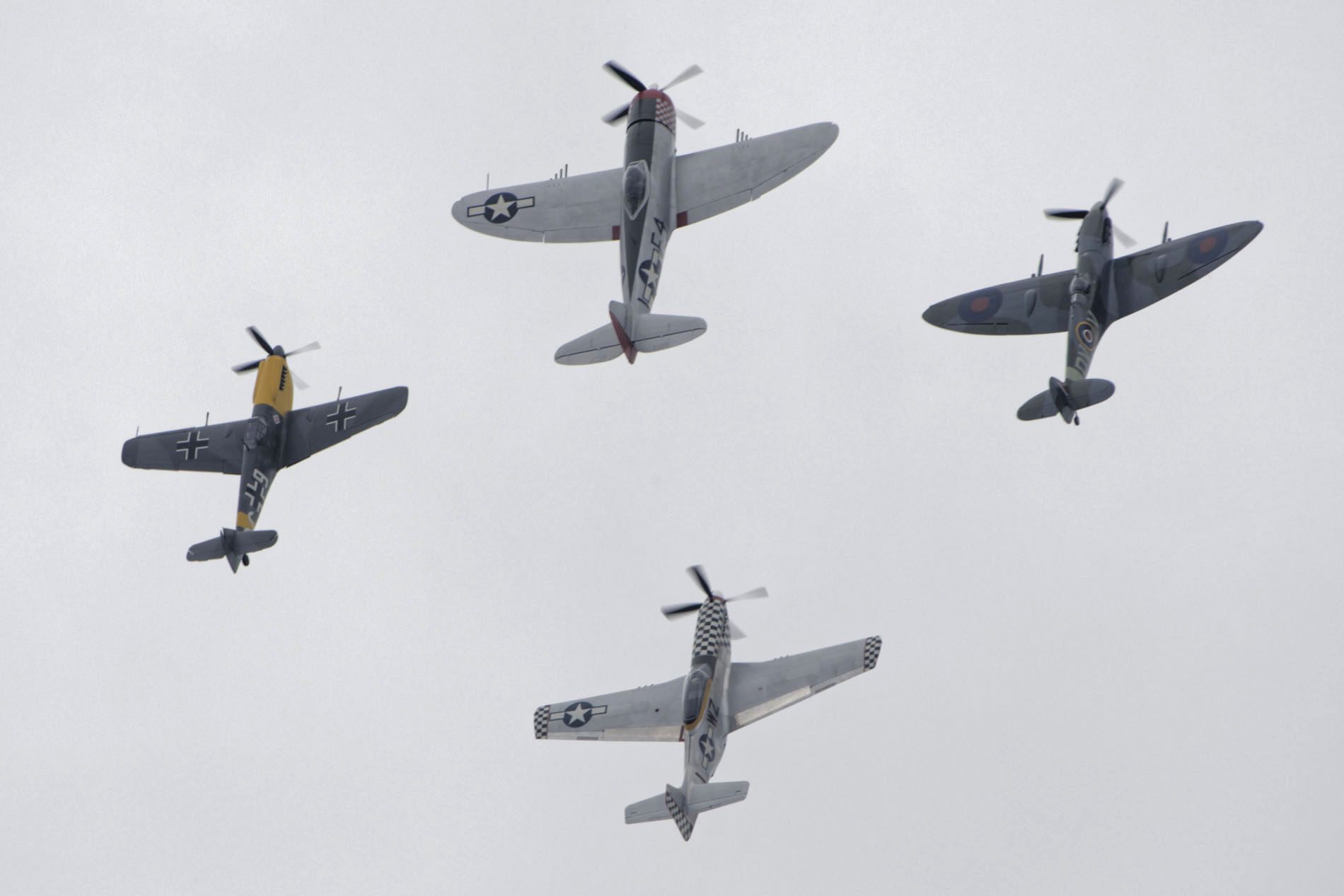
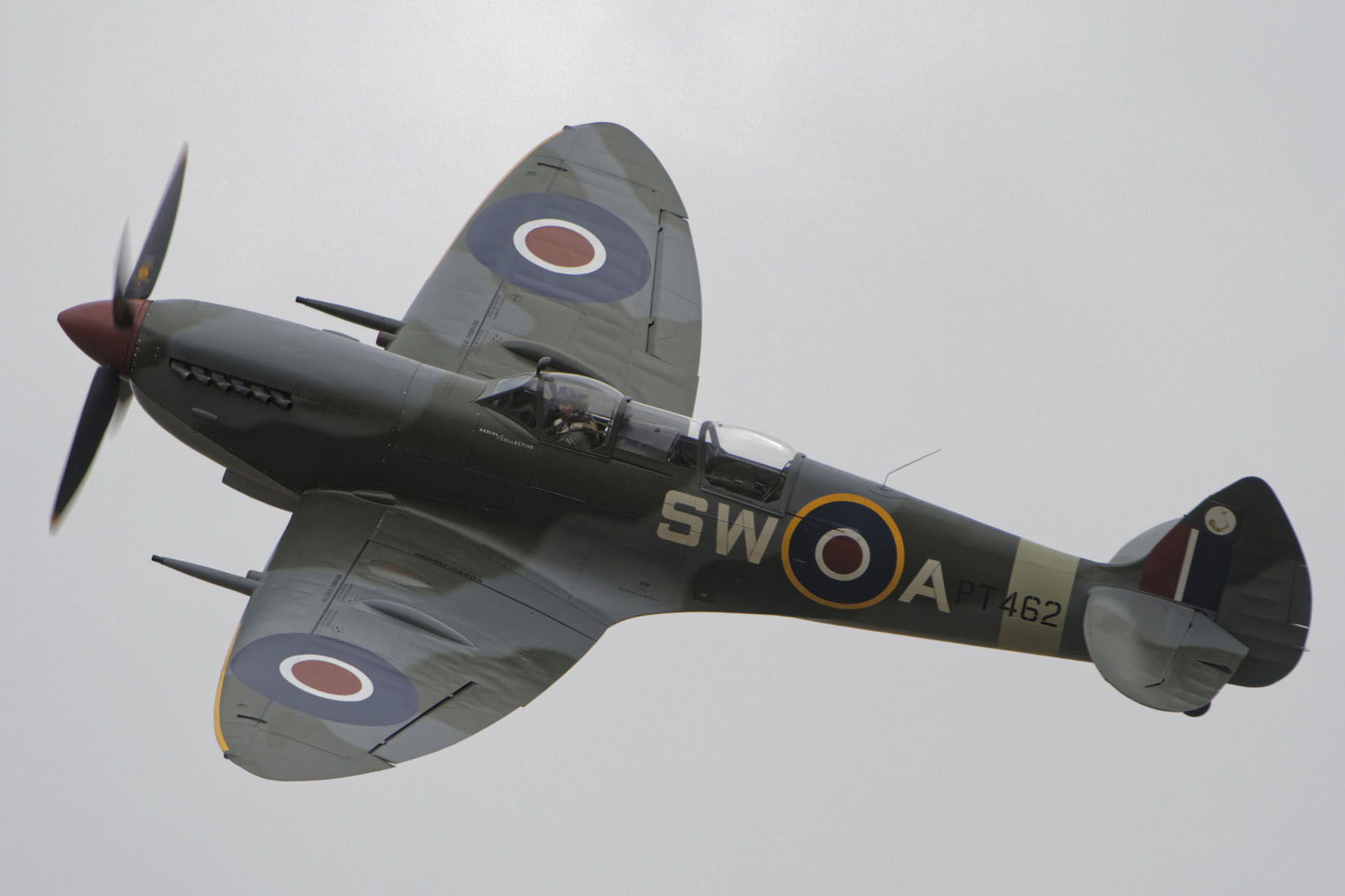
Here’s what the four protagonists reported: “To be able to fly these planes in close formation in an environment with an audience is an enormous privilege. We are four good friends and share a passion for aviation. Being part of the Ultimate Fighters team is an experience that will be hard to beat. Performing acrobatics in formation can be quite difficult because the weights, drag and engines are very different. Throughout the various acrobatic figures we perform, there are times when one plane is pushing hard to follow, where other fighters are not in the same engine rpm. In addition to knowing what could be done with each aircraft, it was also necessary to ensure that an adequate safety margin had been built in to allow the figures to be performed one after the other.”
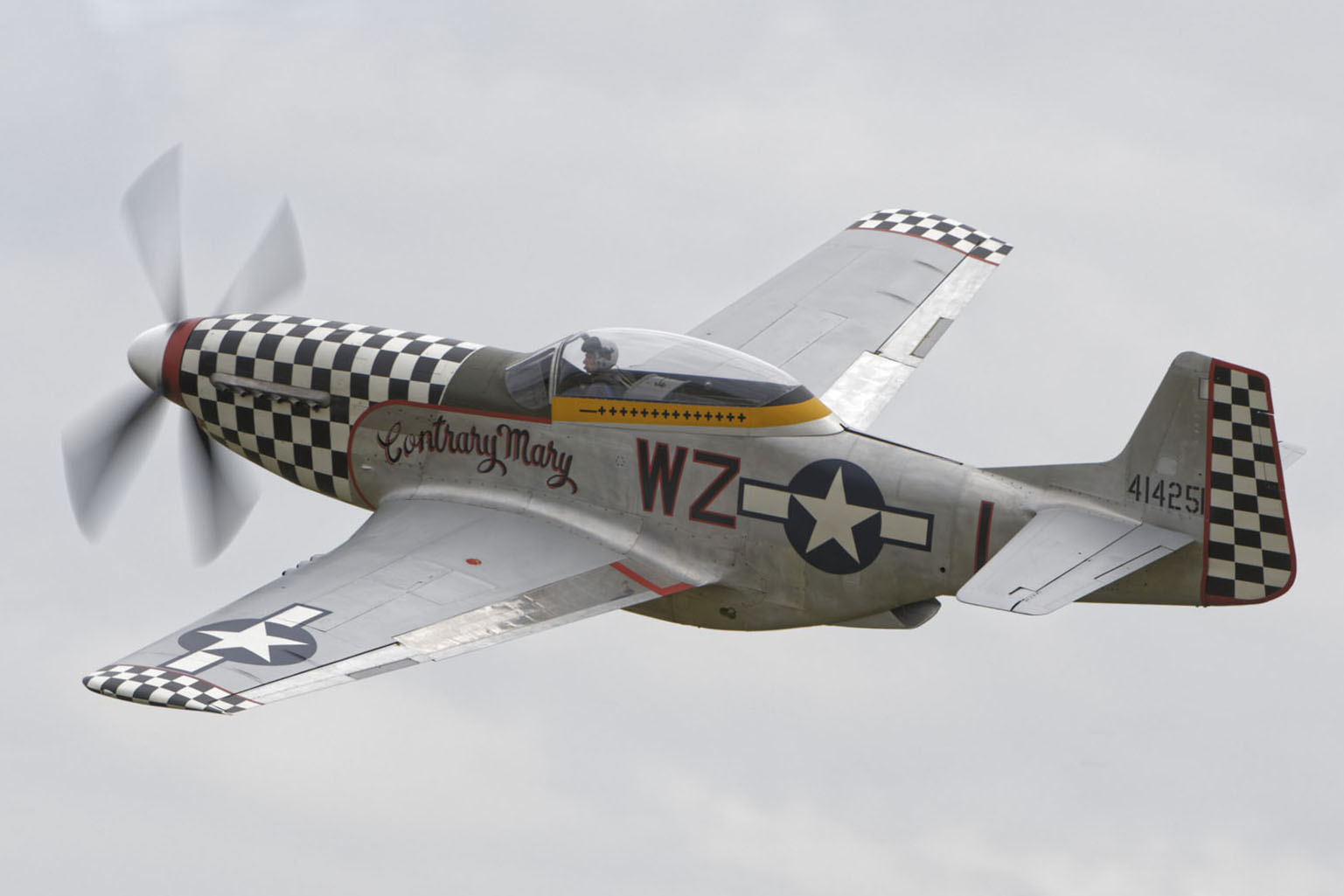
They are planning to come back in 2020.
The other main attraction of this 2019 edition was the presentation of the “Dakota Legends” in memory of D-DAY. A formation of three Dak veterans of the Second World War enthused the audience. This legendary aircraft, a true linchpin of the operation in Normandy, had to be honoured. Let us remember that in June, a contingent of DC-3 and C-47 of all kinds (many from the USA) passed through Duxford before going to France for the D-DAY celebrations and then to Germany to celebrate the anniversary of the airlift on Berlin. Among the three aircraft presented, two had taken part in the night of June 5-6 in the missions over Normandy.

A small focus on the C-47A 42-100882 / N473DC: this plane left the assembly line at Long Beach in December 1943 and left for England in February 1944. It was based at Greenham Common within the 9th Air Force Troup Carrier Command. On June 6th, he took part in Operation Elmira which consisted in bringing gliders to reinforce the first elements of the 82nd Airborne Division already in France. The 14 Waco gliders and the 36 Horsa gliders were to land in an area near Sainte-Mère-Eglise. Many of these gliders were often abandoned on site because they were too badly damaged. Nevertheless, a significant number were recovered for a new use. About 50 C-47s were equipped with the Model 80 “snatch gear” system, which consists of a cable and a special recovery hook. The technique was quite simple: the hook of the C-47 suspended at the end of the cable was hooked into a loop-shaped tow rope (connected to the glider). This loop was suspended five metres above the ground between two supports seven metres apart.
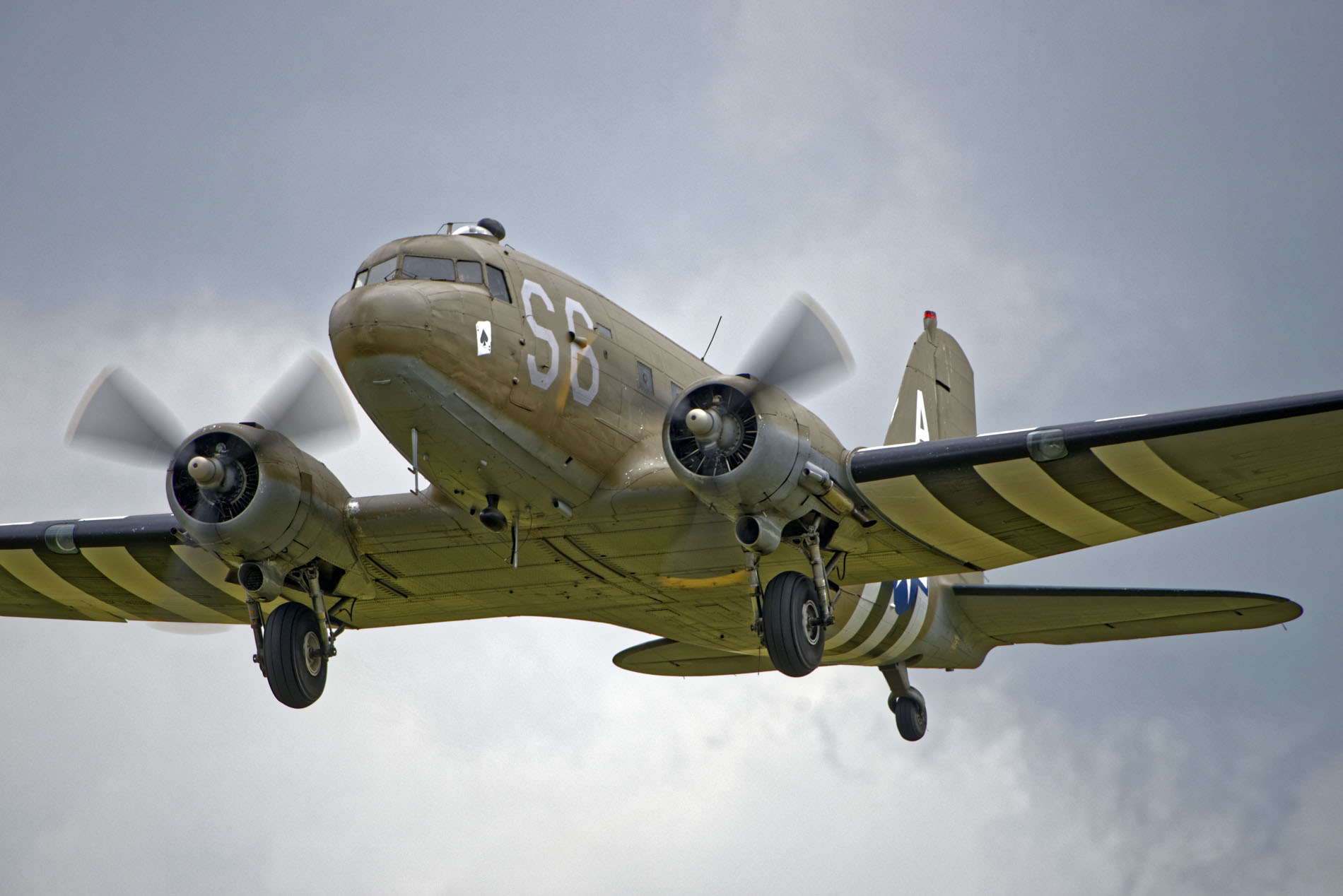
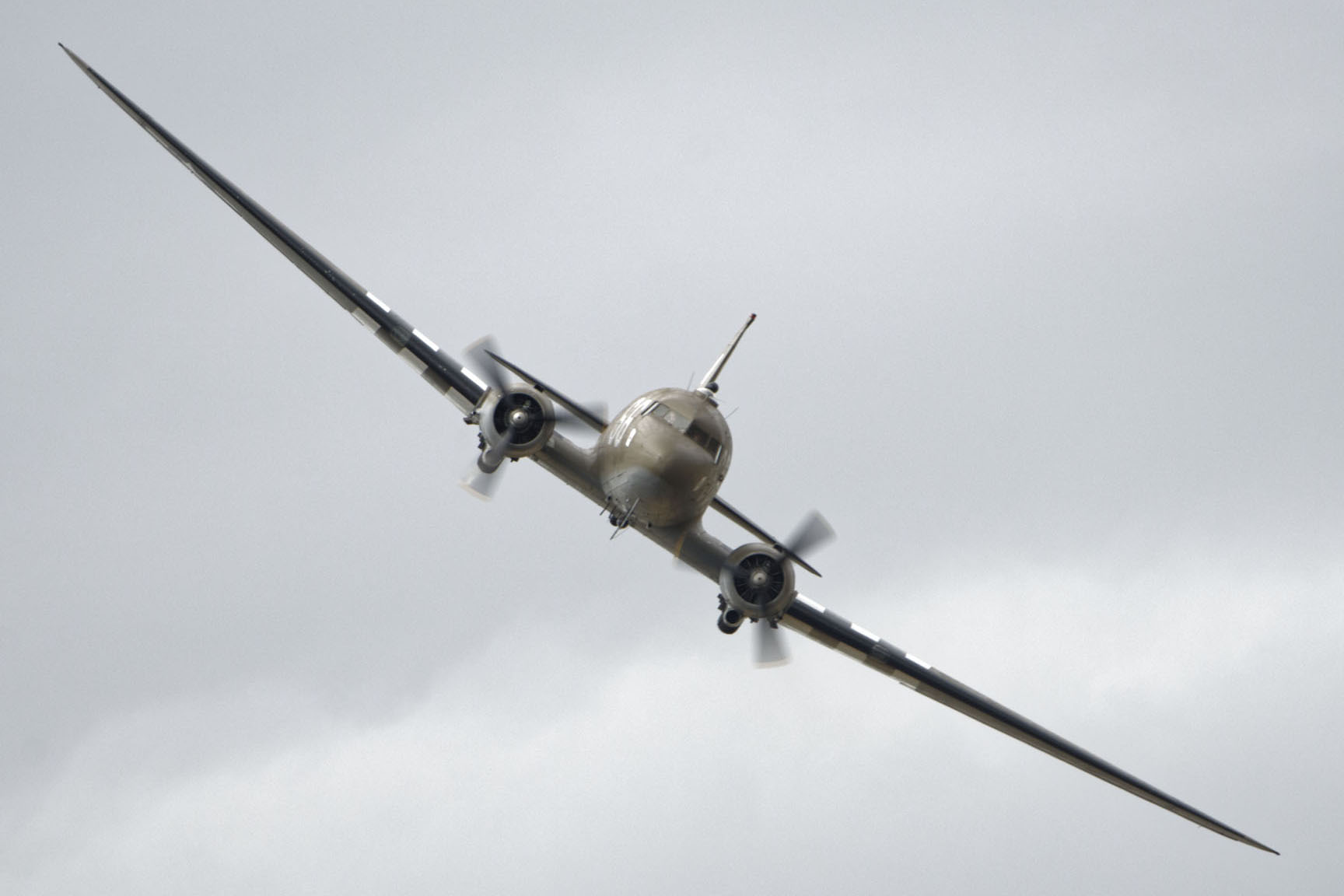
The pilot of the Dak had to aim well, at low altitude, in order to hook the glider’s cable to the ground. But to be more operational in other tasks, most of the C-47s had this system removed except for 42-100882. This one was thus mainly used for this operation during the Normandy campaign. It was then still used as a glider tow and recovery aircraft during Operation Market Garden in Arnhem in September 1944. It was hit by the flag and by German fighters with the consequence of many impacts on and under the fuselage. Miraculously, a bullet passed through the pilot’s seat without causing any casualties. This plane was still used during Operation Varsity and the crossing of the Rhine in March 1945, still in the same function.
After a brief passage with the RAF, the aircraft was transferred to Canada with the RCAF. Various roles were assigned to it, ranging from Medevac (equipped with skis and jato-type rockets) to research, to transport, flying over the Arctic Circle on numerous occasions.
After this already rich military career, he passed into the hands of various civilian owners. He arrived in 2002 at the Arizona Warbirds Museum and then at Dakota Heritage, which commissioned Edwards Worldwide Aviation in Tucson to refurbish him for his return trip to England.
Let’s get back to the airshow itself.
The rest of the program was ‘the usual’ with, to begin with, the aeroplane designed by Reginald Mitchell, the Spitfire of course. The formation of the Vickers-Supermarine aircraft was very varied with versions MK V, MK IX, MK XIV and MK XVIII or even TR.9 and Seafire. This remains without a doubt, one of the moments of the afternoon not to be missed. All aircraft enthusiasts remain speechless at the sight of these nine Spits and their evolutions.

The only B-17 “Flying Fortress” flying on the “Old Continent” shared the sky with its escort of three P-51 D Mustang P-51s. These passages, in spite of grey skies, highlighted the enormous sacrifices of the 8 th Air Force in Europe. One can remember here the loss of 4175 heavy bombers (B-17 and B-24) and a total of more than 26,000 killed during the three years of fighting of the famous unit.

The Curtiss company was then honoured with the Hawk 75 and the P40s in F and C versions. These early conflict aircraft are the trademark of the company in Buffalo, New York. Let us recall here, that this company was founded in 1929 after the merger of 12 distinct entities and it was specialised in airframes, propellers and engines. Note these figures: it produced 13,738 P-40s, as well as some 142,000 engines and 146,400 propellers during the second world war.

The Corsair, Sea Fury and Bearcat sailed between two Spit passages to get in formation for their evolutions. The purr of these three racing beasts, representing naval aircraft, conquered the last sceptics of this July airshow. The climbs all in power followed by beautiful English style passages were on the program.

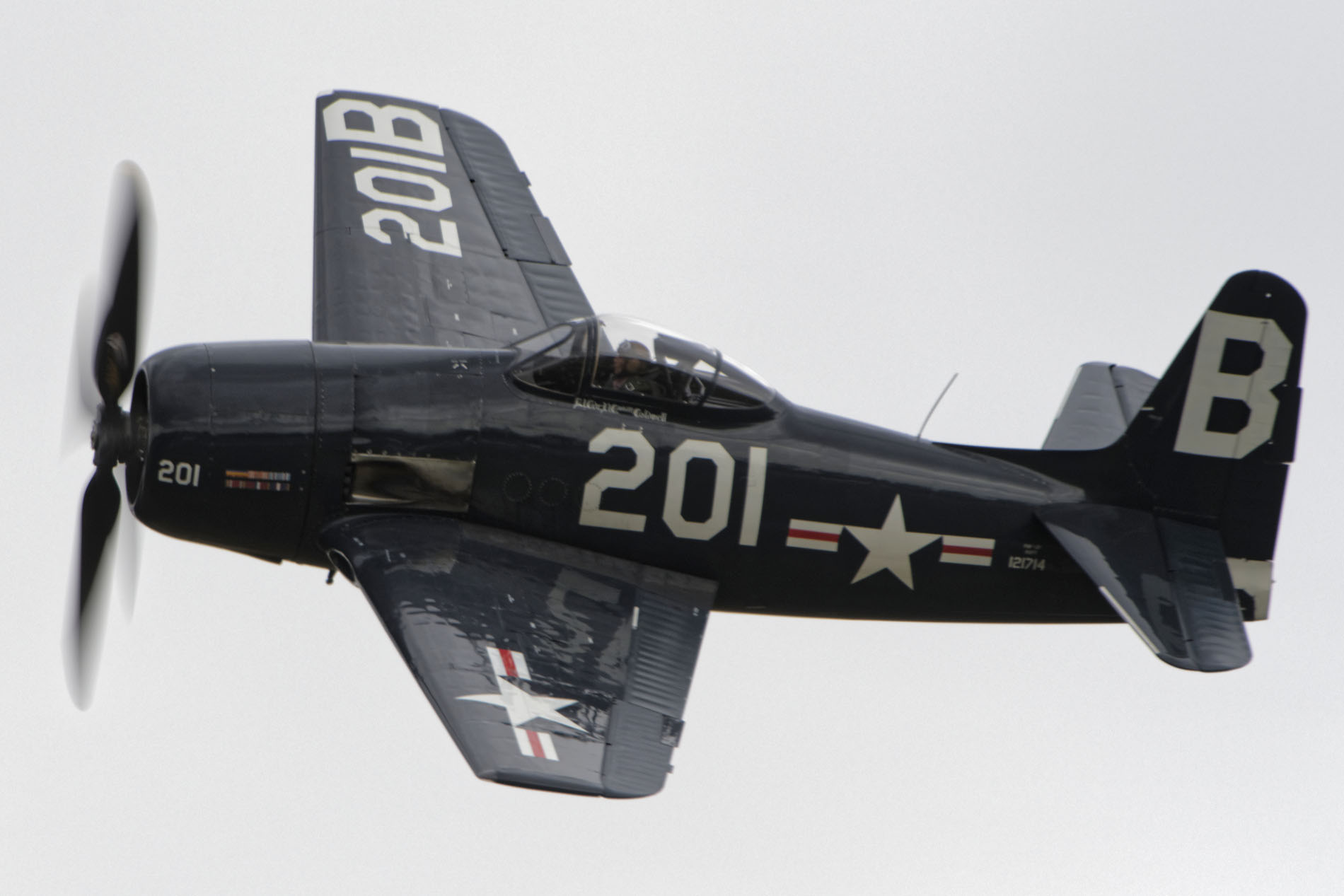
When 5:00 pm approached, it was time to launch the take-offs for the famous “Balbo Formation” which closes each edition of this extraordinary airshow. The view is grandiose! Imagine about twenty warbirds in a taxi in front of the public. The Spitfires, P-51s are supported by a Corsair, Buchon, Bearcat, P-40,…
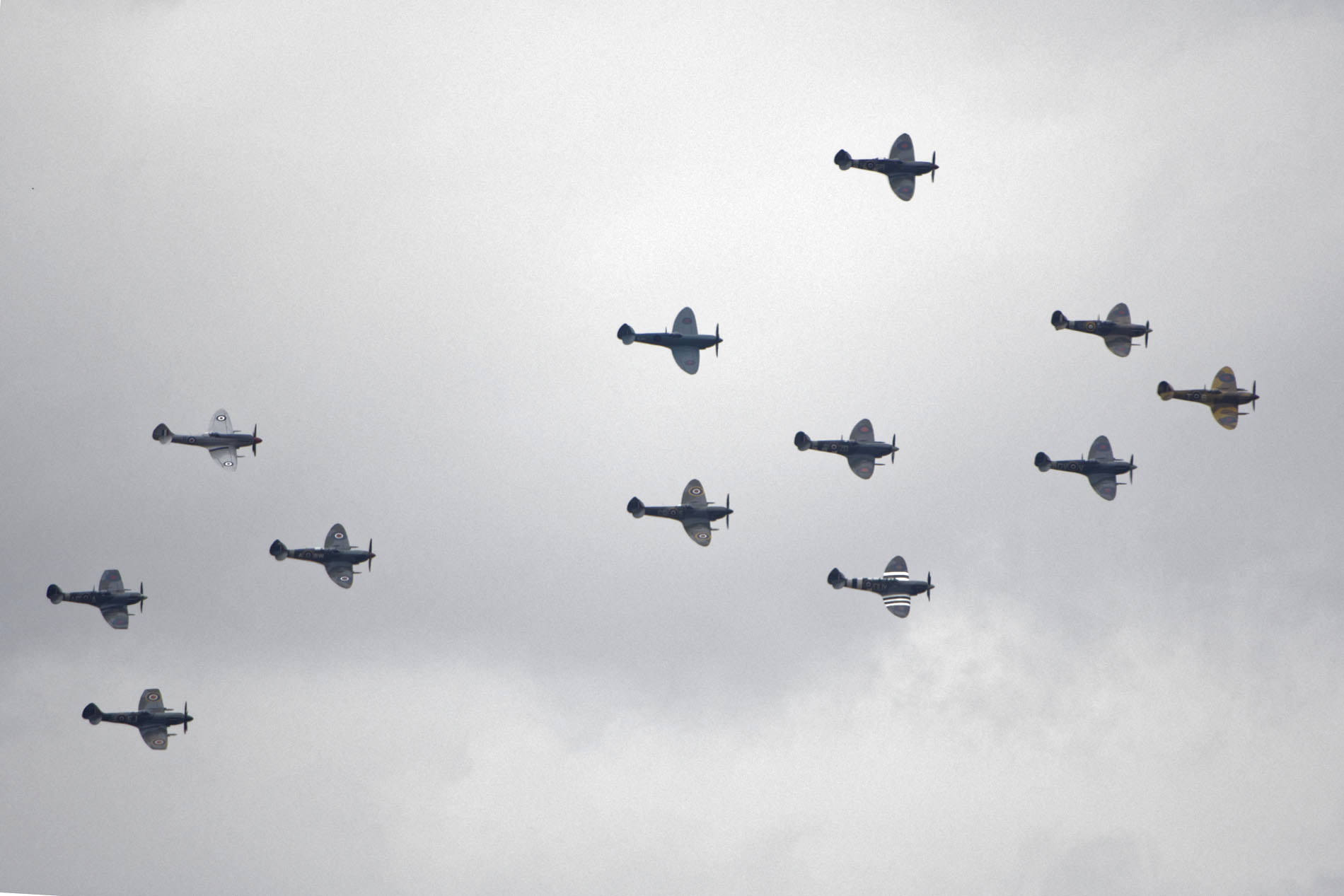
At the moment of departure, the purr of all this little world is heard to the delight of young and old alike. The icing on the cake is that when the big formation is set up, we get repeated passes from the Hawker Sea Fury at first, then the Bearcat to take over. After several passages in formations, the twenty or so aircraft split up into various groups.
In conclusion, attending the airshow since the nineties, this 2019 edition will sadly not remain unforgettable despite the theme.
For example this year, we dearly missed the Hawker Hurricane was, as a few weeks before a patrol of seven similar aircraft was seen in Old Warden. We have also witnessed a decreasing number of aircraft during the seasons.
It must be considered that the implementation of such flying machines remains very expensive and it is not easy to move warbirds from the USA or even Europe. This is a bit of a paradox because we can see more and more of these machines taking to the air on the “Old Continent” (including Belgium). Not so long ago an airshow like this one gleaned various machines coming from France, Germany, Sweden or Austria.
However, it remains the greatest and biggest Warbirds Airshow on the European Continent.
We did enjoy the cheerful atmosphere and the good crowd attending, especially the ‘the british style’ and the great level of details to be dressed like we still were in the fourties.
We hope you have enjoyed the show – A massive thank you to our team of pilots, engineers and volunteers who make it all possible!
Flying Legends Airshow IWM Duxford
THE biggest and best classic aviation event in the world#Flying_Legends #I_W_M #IWMDuxford #Cambridge pic.twitter.com/WQGY858xpt— Flying Legends (@Flying_Legends) July 15, 2019
The conversation continues, follow hashtag #IWMDuxford



![[Chambley Aerodrome, France] Grand Est Mondial Air Ballons 2023 kicked off](https://www.aviation24.be/wp-content/uploads/2023/07/MDB1378_B-Denet-2-218x150.jpg)
The Red Arrows will open Saturday’s show, with another unique, yet-to-be-announced act taking their place on Sunday 14th July. The Reds will perform their high-energy routines before tens of thousands of people – and for the first time at Flying Legends, kids under 16 go free.